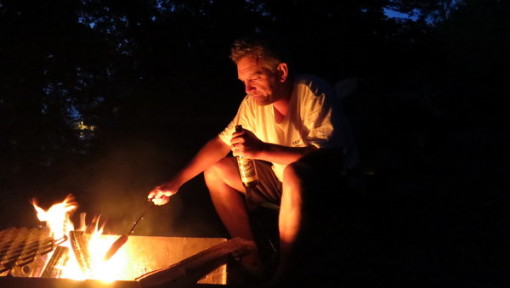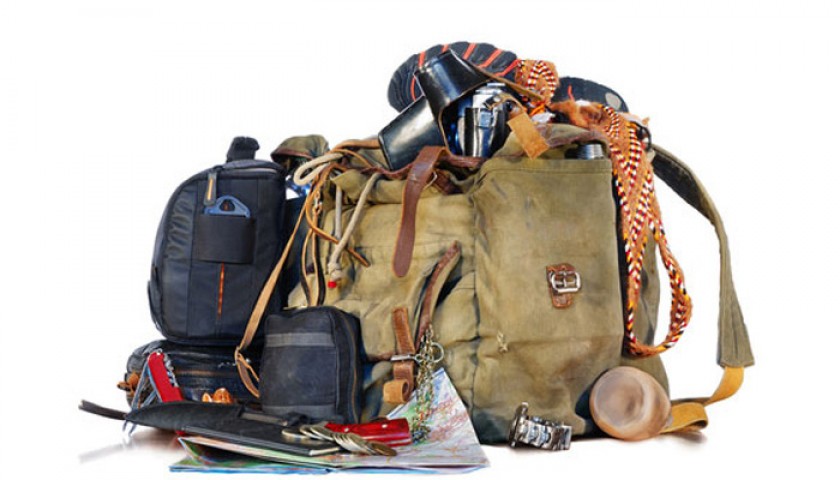Normal people don’t pack this stuff
There are literally hundreds of camping pack lists you can find on the internet. I know, I’ve read dozens of them. Most of them have a lot of extra stuff you probably don’t need like cotton balls or earplugs, things I still can’t figure out why you would bring camping. But my wife sent me a list she found on National Geographic’s website, and it caught me totally by surprise.
The reason Nat Geo’s Hiking and Camping Packing List is so jaw-droppingly offensive is that it assumes the reader either has a deeply disposable income or is just plain stupid rich. For example, when ordinary people go camping they usually tote along some of the following items:
- Tent, probably purchased for less than $100 at Wal-Mart, Big-5, Dicks, GI Joes, or other discount sporting goods stores.
- Sleeping bags, again likely bought at a place like Target and certainly not intended to be carried into the backcountry for weeks at a time.
- Backpack, which could even be a leftover from college days. I’ve seen many a Jansport following hikers around the state parks here in Washington.
- Clothing, probably a loosely-related collection of warm favorites and things you don’t mind ruining.
- Food, often tube steaks or burgers. Sometimes brats. Sometimes grilled fish if they happen to be biting that day.
These are the items that regular people bring camping. Throw in a deck of cards, some firewood and an 18-pack of beer and you’ve got yourself a weekend in the outdoors. And there are few things that beat it.
Nat Geo, however, has a different idea about how people should be camping. To be fair, I wouldn’t have written this post if they had called their list the “Ultimate Camper’s Packing List” or “Lightest Gear for Getting Outside” or even “Extreme Hiking Equipment List for the Financially Irresponsible.” But to suggest that normal people should shell out thousands for this list of camping gear is – in my opinion – darn near criminal.
- Sunglasses: Switch H-Wall (ever heard of those?). Boasting an “anatomically-correct fit” as if dollar-store sunglasses didn’t have a place for your nose and ears, these camping “necessities” will run you $190.
- Daypack: Salomon Agile² 12 Set. Hey, at least it’s streamlined. It better be for $120.
- Jacket: The North Face Dryzzle Jacket. As a Washingtonian, the standard North Face jacket is almost considered a uniform. The Dryzzle will run you $200 and probably works great. But how will you feel about that purchase the first time it snags on a thorn?
- Sleeping Pad: Therm-a-Rest NeoAir XLite. There’s a lot of debate about whether sleeping on a pad should really be considered “roughing it,” but at $160 this pad most certainly does not qualify.
- Tent: MSR FlyLite Tent. And I thought my $120 Coleman was living large! For that price, it sets up pretty easy, sleeps eight and keeps the weather where it belongs. You get almost all of that with the MSR too (except it only sleeps two) for nearly triple the price at $350.
- Hiking Footwear: La Sportiva Women’s Synthesis Mid GTX or Lowa Men’s Renegade GTX Mid Hiking. Having climbed one of our state’s great mountains, I’ll be the first to say “don’t skimp on the footwear.” But you don’t have to pay $180 for the La Sportivas or $230 for the Lowas when a $100 pair of Vibram-soled Hi-Tecs will pamper your feet just as well.
- Shirt: Patagonia Men’s Long Haul Western Shirt. Sure you could spend the $90 and literally “go straight from the trail to the office” as they advertise…but nobody does that. Nobody.
- Pants: Mountain Hardwear Loafer 2 Pant. This one runs $70 but it’s probably the only thing on this list that’s worth it. It’s near impossible to find a durable pair of breathable, comfortable trail pants for $40.
- Dress: Patagonia Women’s Morning Glory Dress. Umm…I’ve been camping my entire life and can’t remember anyone wearing a dress. Ever. Spend the $70 you would have on this dress and get a pair of ladies Loafer 2 pants instead.
- Fleece: Icebreaker Victory Long Sleeve Zip. Do you know what this $150 fleece is made of? Polyester. Do you know what the $15 fleece at Wal-Mart is made of? Polyester. Do the math.
- Vest: Eddie Bauer First Ascent MicroTherm StormDown Vest. Billed as having a “water-repellant finish,” this $130 vest will help keep your torso nice and dry while your arms get soaked. Seriously, anyone wearing a vest on a camping trip is doing it for fashion reasons, not practicality.
- iPhone Case: Beeline Case With Stinger. You can spend $60 for the gold standard of outdoor iPhone cases. Or you can leave your iPhone at home when your intent is to get back to nature.
- Sun Protection: Pearl Izumi Sun Sleeves. Okay, these are pretty cool. Not necessities, but cool for $30.
- Power Charger: FlameStower Fire Charger. Again, this is pretty cool. But instead of shelling out $90, how about just leaving the iPhone at home and enjoying the outdoors?
- Sleeping Bag: Mountain Hardwear HyperLamina Spark. You know, in the Army I had a drill instructor who had a clever name for sleeping bags. Maybe consider it before dropping $220 on this fartsack.
- Snacks: Clif Family Kitchen Nuts. These are the gourmet option of trail snacks at $8 a pop. $8 can also buy a lot of sunflower seeds.
- GPS Watch: Suunto Ambit3 Peak. Feel like forking over a few car payments for an electronic handcuff? Staying tethered to your precious electronics will cost you a cool $500 for this gadget.
So what would a weekend away cost if you took a cue from National Geographic? Grand total: $2,847.
I think I’ll stick with my brats and beer method of camping. Seems to have worked out for me so far.



Thanks LeRoy! It was a great, educational tour and I hope we can do it again as well.
I look forward to seeing you at Lake Quinault again and hope you can do the Rain Forest Tour again.
LeRoy